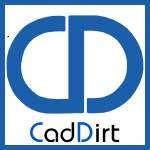 SolidWorks 2008 introduced a new wizard-based tool for developing rules to automate the creation of your SolidWorks designs. There are a few of these wizards in 2008, one of which I know you have heard of, COSMOSXpress. These types of wizards give us a taste of what is possible when these tools are integrated into the design process. Now let's be honest, many of these tools may seem to be primitive but overall will be functional enough to bring some benefits to the table and if the need grows for further capabilities, full powered tools are available to meet those growing needs. DriveWorks, a UK based company, is the first rule-based engineering tool I have seen that brings the tremendous power of automation without requiring the need for advanced programming skills or in-depth training. DriveWorksXpress is a wizard-based tool that brings power and ease without "hamstringing" all the functionality.
SolidWorks 2008 introduced a new wizard-based tool for developing rules to automate the creation of your SolidWorks designs. There are a few of these wizards in 2008, one of which I know you have heard of, COSMOSXpress. These types of wizards give us a taste of what is possible when these tools are integrated into the design process. Now let's be honest, many of these tools may seem to be primitive but overall will be functional enough to bring some benefits to the table and if the need grows for further capabilities, full powered tools are available to meet those growing needs. DriveWorks, a UK based company, is the first rule-based engineering tool I have seen that brings the tremendous power of automation without requiring the need for advanced programming skills or in-depth training. DriveWorksXpress is a wizard-based tool that brings power and ease without "hamstringing" all the functionality.
So the question remains, "How does this compare to SolidWorks' own design tables?" Well, design tables can automate the creation of configurations within one part or assembly. This, in itself, is one of the most powerful features of SolidWorks, changing dimensions, suppressing or unsuppressing of features or parts, and changing custom properties to name a few of its features. Utilizing Excel's functions can bring another level of power with features like custom views, lists and equation based programming to create rules to change aspects of your designs. This can all be done with DriveWorksXpress to0, however there are some other things that it can do that design tables will only dream of.
DriveWorksXpress will create new documents! Design tables are great for changing configurations but what if you want to drive an assembly and all the parts contained resulting in a brand new assembly and supporting parts with drawings? This is what DriveWorks can bring to the table. Information is captured from the model and used to create rules that will make decisions to create, modify and automate the new designs, pushing beyond simply changing the existing design.
The wizard walks through a few steps, first of which is selecting a start part or assembly of which you would like to automate. Then you will select the aspects of each member that DriveWorks will need to change, aspects like dimensions, features, and custom properties. Next you create the form that will capture the user input utilizing methods such as selection lists, check boxes, and keyins with rules. Simply create your rules using Excel based logic and your automation is ready to go.
So what are the limitations of DriveWorksXpress compared to a full license of DriveWorks Administrator? Well there are quite a few but some of the big ones are DWX will only create one drawing per document, will only create parts, assemblies and drawings not other supporting documents like PDF, Word, Excel, XML and HTML. These other documents could automate quotes of the new selected design, attached to an email or even create packaging lables! Lastly DriveWorksXpress is a single user license so extending this out to non-engineering personnel is not possible. That can be a common desire since the creation of the engineering data is automated and the need for a technical person to input the specifications is no longer required once the rules are created. DriveWorks has posted the full details about DriveWorks vs. DriveWorksXpress on their website.
So if the products you design have quite a bit of variation and require a bunch of setup time with every itteration, DriveWorksXpress maybe worth a look. Even if you have a common "seed" assembly that you create with some variations you could use this tool to automate the creation of that seed from a simple input form. What I noticed after using this tool is that it is adictive. Once you start getting your mind into automating a process you will what to incorporate more into that automation! ~Lou
DriveWorks, Ltd., a design automation gold partner inside of SolidWorks, has had a plugin archtecture allowing developers to build tools to further the automation procedure downstream. This extensibility has commonly been used to allow DriveWorks to talk to PDM, automating the procedure of creating projects and checking in specification data as well as the 3D CAD outputs.
.
DriveWorks 7 - SolidWorks Enterprise PDM Plugin
DriveWorks 7 - Specification Destination
DriveWorks 7 - Model GenerationThe setup is further outlined in the help file of DriveWorks 7 Pro, which was one of the many aspects the development group at DriveWorks enhanced in this version. Setup is easy and it makes design automation adoption much easier for those who have already integrated EPDM into their design process. ~Lou

